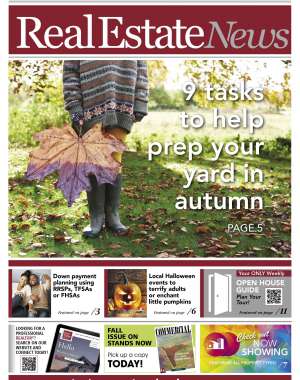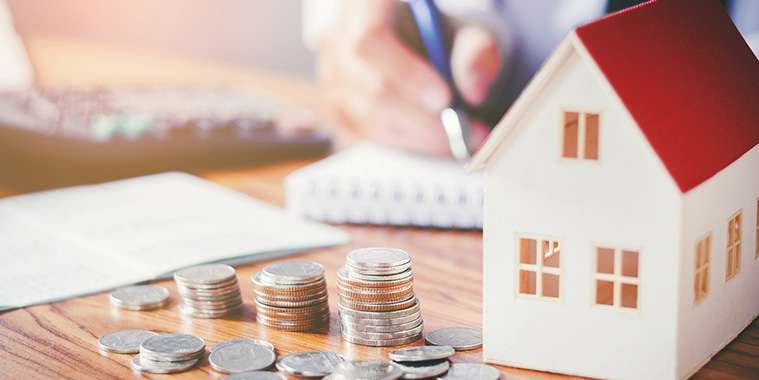Putting together the funds for a down payment often takes time and a solid strategy that goes beyond tucking a few dollars away each month. Luckily, Canadians have access to a number of investment savings accounts that can optimize their savings towards homeownership.
Unlike a standard savings account, an investment account offers specific tax and interest benefits a regular account won’t have, making an investment savings account more advantageous when building for a down payment. For instance, Jessica Moorhouse, a millennial money expert and accredited financial counsellor, explains the longer you plan to save for a down payment, the more appropriate it is to invest your money, rather than keep it in an account that’ll gain very little interest over time.
“If you just leave it in savings, that money will become less valuable over time since there’s no bank account in Canada offering interest rates that keep pace with annual housing price increases,” says Moorhouse. “To combat this, you can invest your money to ensure it does keep pace or even outpaces future real estate price increases to maintain the value of your saved down payment.”
Moorhouse, along with Natasha Macmillan, business director of everyday banking at Ratehub.ca, walks us through the need-to-knows about Canada’s most common investment savings accounts.
Registered Retirement Savings Plan (RRSP)
An RRSP is a retirement savings plan registered with the federal government.
When you contribute to an RRSP, those funds are exempt from tax, capital gains and dividends, so long as the funds remain in the plan. You usually have to pay tax when you cash in, make withdrawals, or receive payments from your RRSP.
The amount you invest into an RRSP reduces your net income, but lowers the income tax you pay, therefore offering a tax break. However, RRSPs have an annual contribution limit, meaning you can only invest so much income into them per year.
“What it actually does is allow you to lower your taxes while saving for a home. It has the overall impact of reducing your yearly income through your contribution,” explains Macmillan. “A caveat here though is your contribution is lost with each withdrawal, and it doesn’t allow you to do tax-free withdrawals with the exception of the Home Buyers’ Plan.”
Under the RRSP account, Canadians also have access to the Home Buyers’ Plan (HBP), which allows first-time home purchasers to withdraw $35,000 tax-free dollars from their RRSP towards buying a home. However, those withdrawn funds must be paid back within a 15-year period. If you don’t, you will be subsequently taxed on it, Macmillan notes.
“In terms of account types, I think most people gravitate towards using their RRSP and the First-Time Home Buyers’ Plan,” says Moorhouse. “This can be a great option if you already have money in your RRSP and don’t mind borrowing from it to buy a home.”
Tax-Free Savings Account (TFSA)
A TFSA is a tax-sheltered account that allows users to hold a variety of investments.
Unlike an RRSP, a TFSA won’t offer you any up-front tax breaks, but any savings you put into the account can grow tax-free. Whenever you want to withdraw money from your TFSA, those funds are also exempt from taxes. Similar to an RRSP, however, a TFSA will only allow you to contribute a specific amount of funds each year. In 2022, the TFSA contribution limit is $6,000.
“It permits those tax-free withdrawals. You can use them for anything. It doesn’t really have many constraints, but it allows you to also use various investment vehicles,” says Macmillan. “You can choose to do something more risky with stocks, or go based on your own risk appetite and look at (guaranteed investment certificates) or mutual funds and things deemed less risky.”
Whether you use a TFSA or an RRSP, Moorhouse says it’s key to actually invest your money when you use one of these accounts.
“Too often people think putting cash into an RRSP or TFSA means they’ve done their duty and are investing wisely. But later on they find out that the whole time the money was just sitting in cash,” she says. “You need to actually invest it, which could mean working with an advisor to manage your portfolio for you, using a robo-advisor and investing in one of their portfolios, or investing on your own using a discount brokerage.”
First Home Savings Account (FHSA)
One of the newest types of investment savings accounts on the market, the tax-free FHSA was unveiled in April as part of the federal government’s 2022 budget, and will be made available in 2023.
Marrying together some of the features of a TFSA and RRSP, Macmillan says the main goal of the FHSA is to help more Canadians purchase their first home and make ownership more accessible.
“Some of the key things to keep in mind with this, and what we’ve heard so far, is deposits and withdrawals are free. So you won’t be taxed on them, and money that’s withdrawn or any investment growth is not taxed,” Macmillan explains. “Similar to TFSA and RRSPs — and this is really what people are saying about it — it allows account holders to store it as cash, and it combines the benefits of a TFSA and an RRSP. This is specifically for buying your first home.”
Just like a TFSA or an RRSP, the amount of money you can contribute to an FHSA is capped annually. Users can put up to $8,000 a year into an FHSA, up to a lifetime maximum of $40,000. An FHSA can also only be opened for 15 years, according to Macmillan. Should you not max out the contribution amount every year, it’s lost and can’t be carried forward unlike a TFSA. However, there’s no obligation to repay the amount withdrawn you’re using towards your first home like the RRSP Home Buyers’ Plan. If you don’t use your FHSA funds to buy a home, Macmillan says the money can be transferred into an RRSP or a Registered Retirement Income Fund (RRIF).
When it comes to using investment savings accounts to create a down payment, Moorhouse said it’s possible to use multiple types of accounts towards your savings goal.
“Often people will start with one account, like their RRSP, then when they max that out, move onto saving through their TFSA,” said Moorhouse. “Then once that’s maxed out, use a taxable account. And next year when the FHSA is available, they can use that too. However, they won’t be able to use it in conjunction with their RRSP, as per the rules.”
As always, if you’re looking to buy your first home, consult the advice of an REALTOR® to walk you through the process.
The information discussed in this article should not be taken as financial or legal advice. This article is for informational purposes only.
— Realtor.ca



